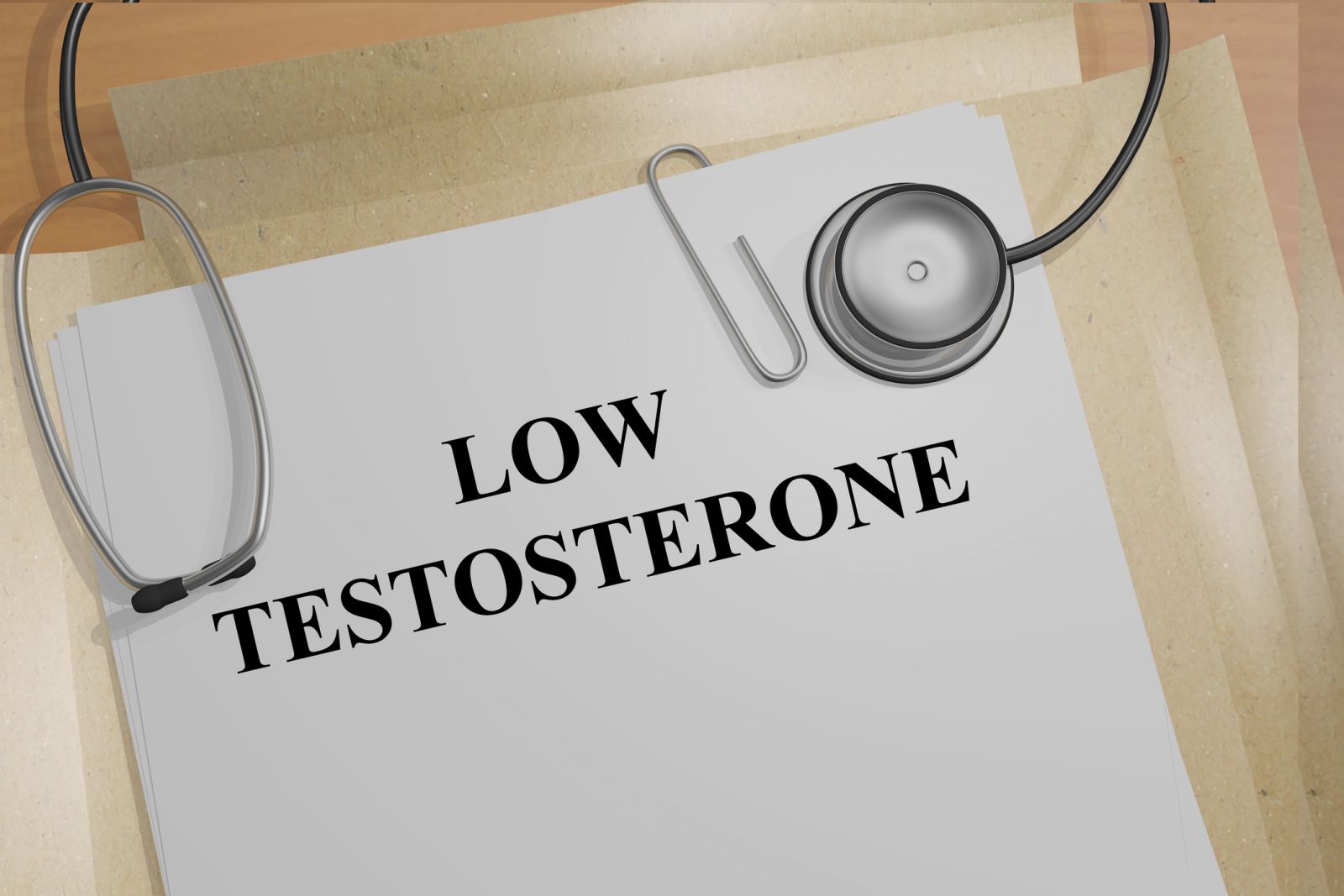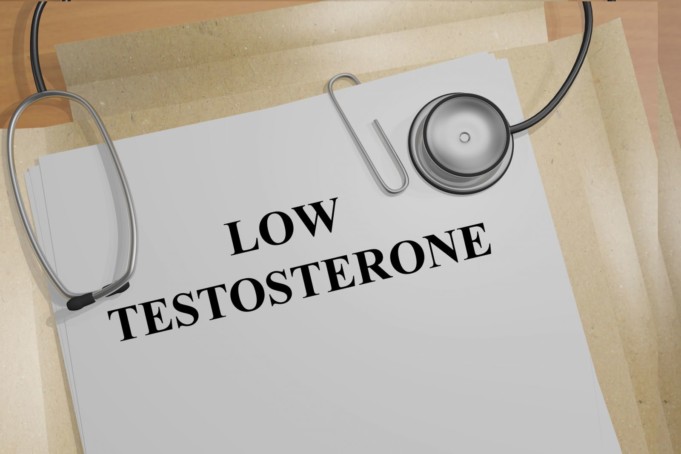Feeling a bit low? Testerone levels affect your mood, libido and cognitive functioning. If you’re looking for the right therapy to boost your testosterone levels, look no further. Testosterone replacement therapy can improve the symptoms and risks that come with low testosterone.
Low Testosterone Today
 There are numerous names for it: male menopause, andropause, male climacteric… even the mouthful “partial androgen deficiency in the aging male” or PADAM. No matter what you call it, low testosterone due to aging is as real and consequential as female menopause.
There are numerous names for it: male menopause, andropause, male climacteric… even the mouthful “partial androgen deficiency in the aging male” or PADAM. No matter what you call it, low testosterone due to aging is as real and consequential as female menopause.
Low testosterone levels lead to significant changes in mood, sex drive, and cognitive abilities — including memory and spatial orientation. Fatigue, depression, and anger are noted. Decreased lean body mass, muscle strength and volume, and hair loss are also connected to low T-levels.
This natural process has been unavoidable — until now.
Testosterone replacement therapy provides relief from low testosterone symptoms, as well as offering additional health benefits. Recent studies indicate improvements in cholesterol, glucose levels, body fat, lean muscle mass — all of which reduce risks of heart disease.
Similarly, the American Association of Clinical Endocrinologists and the American College of Endocrinology reached a joint consensus that testosterone replacement therapy offers a protective effect for those at the highest risk of heart attacks. In short, testosterone helps.
These findings contrast claims by the FDA. However, substantial evidence supports the safety and efficacy of testosterone replacement. The National Institute of Aging published scientific findings illustrating the significant benefit of testosterone treatment for sexual function, mood, and depressive symptoms in older men (65+ yrs) without increased cardiovascular risk.
Testing for Low Testosterone Levels
Testosterone levels vary from man to man, and clinicians may disagree at which point T-levels are considered “low”. While symptoms alone are not enough to diagnose low testosterone, in conjunction with blood draw results, your doctor can identify if you suffer from low testosterone.
According to national guidelines , testosterone levels beneath 300 ng/dL are a potential cause for concern. For those with prior evidence of (naturally) elevated testosterone levels, current levels above 300 ng/dL may also warrant testosterone therapy. It simply depends on the individual.
In your blood, testosterone appears in several forms, and there are multiple tests to diagnose testosterone deficiency. Total testosterone is often ordered first. A total testosterone test measure both “free” testosterone and testosterone that is bound to proteins (i.e. albumin and sex-hormone binding globulin [SHBG]).
Free testosterone circulates freely through the bloodstream. This unbound form of testosterone is fully active, while protein-bound testosterone is inactive or partially-active. Free testosterone is present in minor amounts (roughly 1 -4%). Partially-active testosterone (bound to albumin) is also “bioavailable”. The rest, however, is inactive testostosterone (40-60%) — bound to SHBG.
Depending on the results of the total testosterone tests, additional testing may be done:
- Sex-hormone binding globulin (SHBG)
- Dehydroepiandrosterone (DHEA)
- Follicle-Stimulating Hormones (FSH)
- Luteinizing Hormones (LH)
- Estrogens and more
Testosterone Replacement Therapy
Once low testosterone levels are identified, there are six principal forms of replacement therapy:
- Oral tablets
- Intramuscular injection
- Subdermal implant
- Transdermal patch
- Transdermal gel
- Transbuccal pill
Of these therapies, let’s focus on the subdermal implant — also called hormone pellet therapy.
Hormone pellet therapy involves a non-surgical procedure to place a hormone pellet beneath the skin. Each implant lasts 3 -6 months; this treatment supersedes the need of a daily regimen. It also reduces common side effects — such as irritation of the skin or mouth (seen with patches and transbuccal pills), mood fluctuations (like intramuscular injections), and liver issues (oral).
Pellet implants release small, consistent doses of hormones to mimic the body’s natural hormone production. While patient acceptance of the pellet procedure is exceptionally high, it is imperative that the dosage is delivered correctly when initially administered.
Once the pellet is in place, the dosage is unadjustable. If under -dosed, additional testosterone supplementation can occur through other means. However, an overdose negatively affects the patient until the pellet dissolves. Thus, choosing a physician experienced in hormone pellet therapy is essential. (Ensuing pellet dosages are based on subsequent hormone testing.)
Equally important: these hormone pellets are custom-compounded and bioidentical.
Compounded hormone treatments are prepared on an individualized basis — based on your specific symptoms, hormone levels, and underlying medical conditions. “Bioidentical” hormones are molecularly identical to human hormones. They are plant-derived, often from yams and soy.
Bioidentical hormones are available in numerous forms. Tablets, patches, creams…
While hormone pellet treatment may prove too costly for some, other forms of bioidentical hormone replacement provide similar benefits (with slightly less convenience). When it comes to bioidentical hormones vs. synthetic hormones, however, the difference is a world apart.
The Beauty of Bioidentical Hormones
Synthetic hormones differ in chemical structure from human hormones. Pharmaceutical companies — in order to patent hormone treatments — deliberately add extra covalent bonds or molecules to create a novel (albeit similar) compound.
These synthetic compounds interact with the body’s natural hormone receptors. Since the synthetic hormones are not identical to human hormones, they interact differently with the receptors. Imagine a lock and key. The receptors are a lock that multiple keys can open.
Synthetic hormones act as a key, but they’re not an exact match. The problem? Receptors kickstart an array of important cell functions based on the instructions received from hormones. Not all hormones are created equal, and any mismatch may complicate the response.
The introduction of synthetic hormones also invites various affinities, which can produce normal or abnormal reactions, or simply block the receptor from receiving natural hormones. It’s a competitive world. If a receptor is bound to a synthetic hormone, it isn’t bound to a natural one.
Methyltestosterone — a synthetic version of testosterone used in oral tablets — has a similar affinity to human testosterone. Thus fluoxymesterone was created, with twice the half life. Both of these synthetics produce typical testosterone responses, yet they lack tissue selectivity.
The insensitivity of synthetic testosterone, in this case, disproportionately affects gonadotrophs. Gonadotropin (gonad-stimulating hormones) secretion is thus suppressed, leading to infertility. The reduction of these FSH and LH hormones results in a decrease of testosterone production and hypogonadism — which is typically treated with testosterone replacement therapy. (Ironic.)
Bioidentical testosterone is different. An identical molecular structure behaves exactly as human testosterone. Receptors aren’t bound for twice as long, leading to potential overstimulation and prevention of natural uptake. The body keeps producing testosterone on it’s own. And all is well.
Low testosterone may feel like a maze. Treatment options range from potentially harmful to life-changing, and research appears conflicting at times. Trust a knowledgeable medical professional to help you navigate through the storm. If you feel low, remember: help is at hand.












